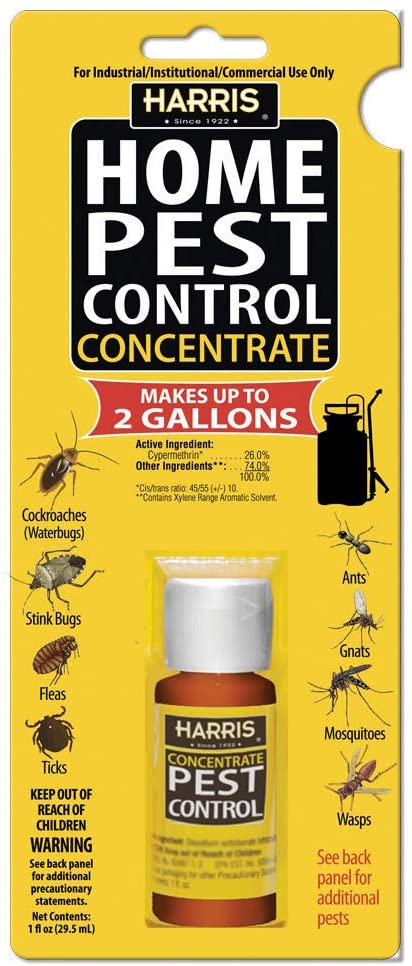Experienced A1 Exterminators Charlotte NC - Rapid and Reliable Solutions
Experienced A1 Exterminators Charlotte NC - Rapid and Reliable Solutions
Blog Article
Bed Insect Therapy Breakdown: Contrasting Chemical Vs. Non-Chemical Solutions
In the realm of bug control, especially when dealing with the persistent issue of bed bugs, the option in between chemical and non-chemical treatment solutions can be a crucial one. Both strategies use distinctive advantages and downsides, affecting aspects such as efficiency, safety considerations, and overall expense. By checking out the nuanced information of each method, a more clear understanding of which course to pursue in addressing a bed bug infestation can be acquired.
Efficiency of Chemical Treatments
Chemical therapies for bed pest invasions have actually been extensively recognized for their rapid and potent efficiency in getting rid of these pests. When taking into consideration the performance of chemical treatments, it is crucial to comprehend that they can give a fast and detailed option to a bed pest problem.
Moreover, chemical therapies have the benefit of using recurring effects, meaning that they can remain to remove bed pests also after the first application. This residual action is specifically advantageous in combating any prospective re-infestations. In addition, the quick activity of chemical treatments can bring alleviation to people dealing with serious bed insect problems, allowing them to regain control of their space quickly.
Safety And Security Worry About Chemical Solutions
One essential element that requires cautious factor to consider when using chemical solutions for bed insect therapy is guaranteeing the security of occupants and the setting. Direct exposure to specific chemicals used in bed insect treatments can lead to respiratory system problems, skin irritation, or other unfavorable reactions, especially in people with pre-existing conditions or sensitivities.
Moreover, the environmental impact of chemical options is one more substantial factor to consider. Some chemicals made use of in bed bug therapies may be unsafe to advantageous bugs, wildlife, and ecosystems if they seep into the dirt or water supply. It is necessary to utilize chemical therapies sensibly, complying with security guidelines, and taking into consideration less hazardous alternatives to reduce these threats and guarantee the reliable and secure management of bed bug problems.
Advantages of Non-Chemical Strategies
Thinking about the prospective security concerns and ecological effect connected with chemical solutions for bed insect therapy, exploring non-chemical approaches provides an appealing option with several unique advantages. Non-chemical treatments are ecologically friendly, as they do not add to air or water air pollution, making them a lasting option for parasite control.
Additionally, non-chemical remedies can be efficient in targeting bed insects, consisting of hard-to-reach locations where chemical treatments might not linked here penetrate - A1 exterminator charlotte nc. Methods such as warm therapy, vacuuming, heavy steam cleaning, and bed mattress coverings provide thorough removal without the usage of hazardous chemicals.
Limitations of Non-Chemical Treatments

Furthermore, non-chemical therapies usually need several applications to accomplish successful eradication. This can be taxing and may not always guarantee total removal of all bed pests and their eggs, especially in concealed or hard-to-reach places.
Additionally, the success of non-chemical treatments greatly depends on correct execution and thoroughness, which can be testing for individuals without specialist experience. Insufficient application of non-chemical approaches may cause incomplete eradication, resulting in consistent infestations and the demand for additional treatments.
For that reason, like it while non-chemical therapies have their advantages, it is necessary to acknowledge these limitations and consider them when identifying one of the most effective technique for taking care of bed pest invasions.
Expense Contrast: Chemical Vs. Non-Chemical Options
Offered the restrictions connected with non-chemical therapies, a necessary element to examine in the context of bed insect administration is the expense comparison in between chemical and non-chemical alternatives. Chemical treatments generally involve the application of insecticides by professionals, which can vary from $250 to $900 per room, relying on the intensity of the infestation and the size of the area to be dealt with. On the other hand, non-chemical therapies like warm therapy or heavy steam can be more pricey, with prices ranging from $1,000 to $6,000 for an entire home. While the initial official source cost of chemical therapies might appear lower, multiple therapies might be required to completely get rid of the infestation, potentially enhancing the total cost. On the other hand, non-chemical choices might supply a more lasting and green option, although they can be cost-prohibitive for some individuals. Inevitably, when considering the expense of bed pest treatment options, it is very important to weigh the in advance expenditures against the performance and lasting sustainability of the picked method.
Verdict

Considering the potential safety and security problems and environmental impact associated with chemical remedies for bed pest therapy, checking out non-chemical techniques presents a promising choice with numerous distinct advantages.Given the limitations linked with non-chemical treatments, a crucial element to examine in the context of bed pest monitoring is the expense comparison in between chemical and non-chemical alternatives. In contrast, non-chemical treatments like heat treatment or heavy steam can be extra costly, with prices varying from $1,000 to $6,000 for an entire home. While the preliminary price of chemical treatments might appear lower, multiple treatments may be needed to totally eradicate the invasion, possibly increasing the overall price.In final thought, when comparing chemical and non-chemical bed pest therapy alternatives, it is essential to take into consideration effectiveness, security, benefits, constraints, and cost.
Report this page